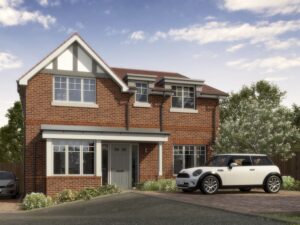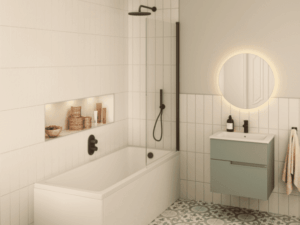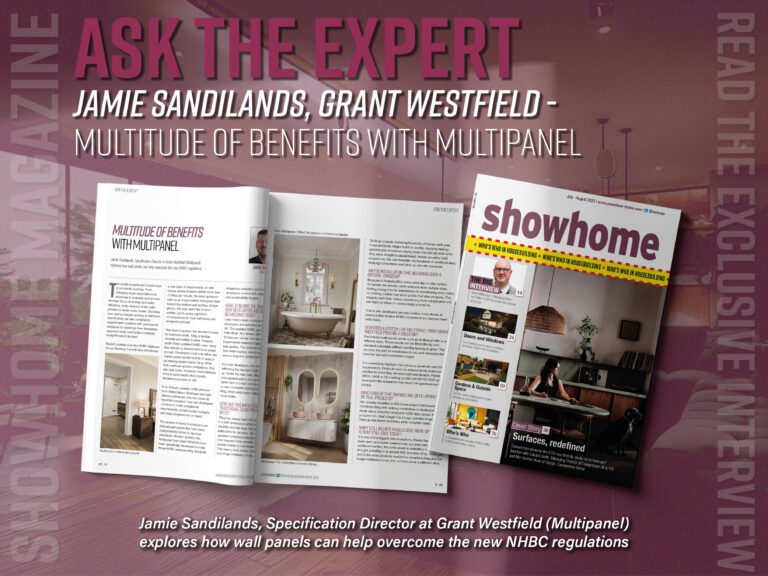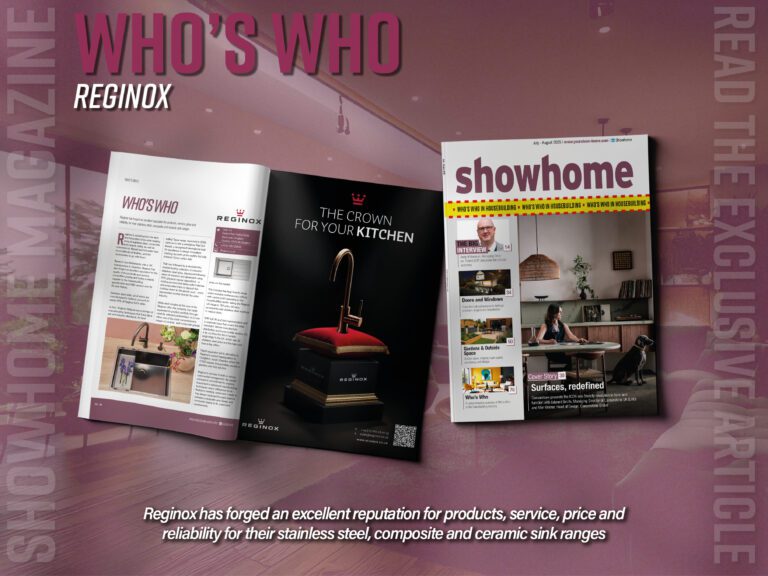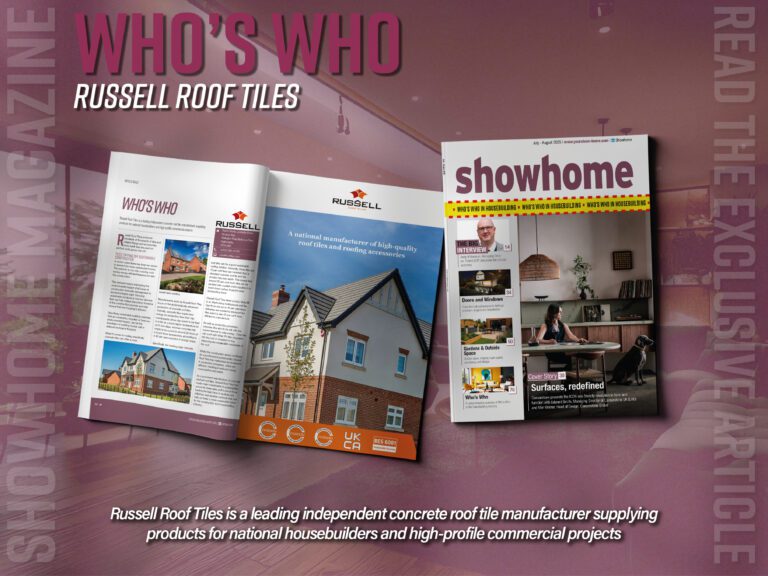Smart home integration is becoming standard in new builds, driving infrastructure-first design, investigates Rebecca Spayne, Managing Editor of Showhome
Once regarded as a post-purchase luxury or aftermarket upgrade, smart home technology is now moving into the structural DNA of new builds. The expectations of buyers—especially first-time and second-step homeowners—have shifted. A functional Wi-Fi connection and a basic thermostat no longer suffice. Today’s homeowners increasingly look for homes that provide seamless control over heating, lighting, and energy consumption, often from their smartphone or voice assistant. As a result, developers are being pressed to rethink how they approach first fix specifications and infrastructure planning.
This shift isn’t purely buyer-driven. The convergence of regulatory requirements, building performance frameworks like SAP 10, and industry net-zero targets has placed increased scrutiny on how homes manage and measure energy. Smart controls, sensors and load-balancing systems are proving instrumental in achieving compliance on a unit-by-unit basis—particularly when integrating low-carbon technologies such as heat pumps, solar PV and mechanical ventilation.
In addition, the cost barrier to integration has lowered. Previously, automation was costly and proprietary, with little standardisation between manufacturers. Now, with the rise of open protocols like KNX, Matter, Zigbee, and Z-Wave, systems are more interoperable, easier to maintain, and better suited to phased developments or modular delivery.
For UK housebuilders and developers, the message is becoming clear: smart technologies should not be viewed as optional extras or ‘lifestyle features’. Instead, they are rapidly becoming baseline infrastructure, just like plumbing or electrics. The house of the future isn’t defined by the gadgets it contains—but by its ability to respond intelligently to occupant needs, utility demand, and carbon efficiency expectations.
Smart Energy & Load Control
Energy management has become the cornerstone of smart home functionality—both from a regulatory compliance perspective and in terms of perceived buyer value. For new build developers, the ability to offer intelligent heating, zonal control and load balancing isn’t just a route to enhanced user experience—it’s also becoming a key contributor to SAP scores and a growing point of differentiation in the market.
One of the most widely adopted smart features in new builds is zonal heating. UK-based manufacturer Drayton, with its Wiser smart heating system, offers a modular, wireless solution that supports multizone control via radiator thermostats. What makes Wiser particularly attractive for housebuilders is its compatibility with both traditional boilers and low-temperature systems such as heat pumps—giving flexibility to developers navigating the transition away from fossil fuel heating.
Wiser also supports OpenTherm, which enables real-time communication between the thermostat and boiler or heat pump, resulting in optimised modulation rather than simple on-off cycling. This contributes to improved energy efficiency and smoother heating curves—both of which positively impact SAP assessments.
As the adoption of heat pumps increases, integration with smart thermostats becomes critical. Passiv UK, a Showhome Smart Solution of the Year Winner, has emerged as a specialist in this space. Their Passiv Smart Thermostat goes beyond simple room temperature control, offering predictive control based on weather forecasts, occupancy patterns and tariff data. It also integrates with thermal storage and battery systems, allowing homes to preheat during low-cost periods or excess solar generation, then reduce demand during peak grid hours.
Passiv UK’s system is already being piloted across social housing retrofit and new build schemes, often in conjunction with communal heat networks or hybrid systems. Its value lies in its ability to treat energy demand as a managed service, not just a passive utility.
Compatibility and longevity are also key concerns for developers. Specifying systems that will remain functional and supportable over a property’s lifecycle—regardless of the homeowner’s preferred ecosystem—is critical. This is where Theben’s LUXORliving system demonstrates practical value. Built on the KNX open protocol, it allows integration of heating, lighting, blinds and occupancy detection in one unified platform. Importantly, KNX is vendor-agnostic, so components from different manufacturers can be swapped or upgraded without reworking infrastructure.
Theben’s system is also designed with staged development in mind. Developers can install the base wiring and backbone at build stage, with functionality enabled or expanded later depending on buyer specification or tenure type.
The role of smart control in energy load balancing is increasingly relevant as homes adopt solar PV, electric vehicle charging and home battery systems. Gira’s Energy Profile integrates these systems, allowing prioritisation logic—such as charging an EV only once hot water and heating demand is met. For developers, this provides a way to futureproof electrical layouts without committing to full system deployment at build stage.
Another UK-focused system suited to new build deployment is Wondrwall, which integrates intelligent heating control with battery storage, solar optimisation and automation. Its system uses embedded sensors and neural networks to learn occupant behaviour and adjust energy usage accordingly. For developers, Wondrwall offers a complete smart ecosystem that can be pre-installed at build stage, including intelligent light switches that also act as sensors and environmental monitors. This allows for consolidated wiring, reduced hardware clutter, and a more seamless finish—aligning with the growing shift towards single-platform whole-home control.
Lighting & Environmental Controls
Lighting has long been a visual design consideration, but in the context of smart home integration, it’s evolving into a functional technology that supports energy efficiency, comfort, and automation. For developers, early-stage planning for lighting control is increasingly necessary—not just for aesthetics, but to meet buyer expectations for intuitive living spaces and low energy consumption.
Systems like Lutron’s RA2 Select enable room-by-room lighting control, supporting the creation of pre-set scenes for working, dining, relaxing or sleeping. Although often associated with high-end projects, RA2 Select is designed for scalability and retrofit resilience, making it appropriate for mid-range new builds where smart lighting is offered as a premium upgrade or part of a smart-ready infrastructure bundle.
Scene-setting is particularly relevant in today’s multi-use spaces—where open-plan areas need to accommodate both work-from-home functions and evening social uses. Smart lighting allows residents to shift ambience and function with minimal effort, increasing day-to-day satisfaction and long-term usability of the home.
Theben’s theLeda D outdoor motion sensors and daylight controllers offer a straightforward but effective energy-saving solution, particularly useful in communal areas of multi-dwelling units or housing developments with shared spaces. These luminaires automatically adapt to natural light levels and only activate when motion is detected, avoiding unnecessary night-time illumination and reducing electricity consumption across an estate.
For housebuilders, using lighting products with integrated PIR and photocell functions minimises installation complexity while delivering measurable energy reductions—relevant in both carbon reporting and cost-efficiency for residents.
At the higher end of the market, buyers are increasingly concerned with wire concealment and space optimisation. UK-based manufacturer Zuma addresses this with a combined LED downlight and audio speaker system that fits into a standard ceiling cut-out. From a developer perspective, Zuma allows for a reduction in visual clutter and simplifies cabling during first fix. The product has seen traction in smart-ready showhomes, particularly those targeting premium or executive buyers….

